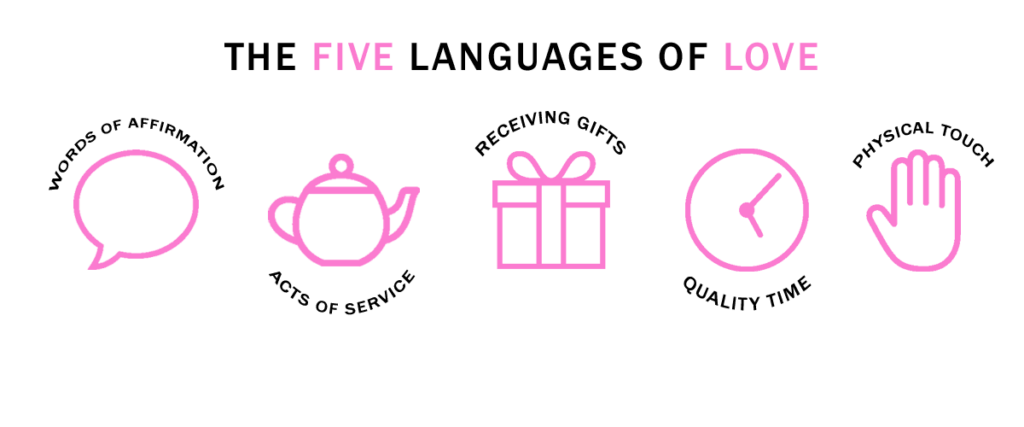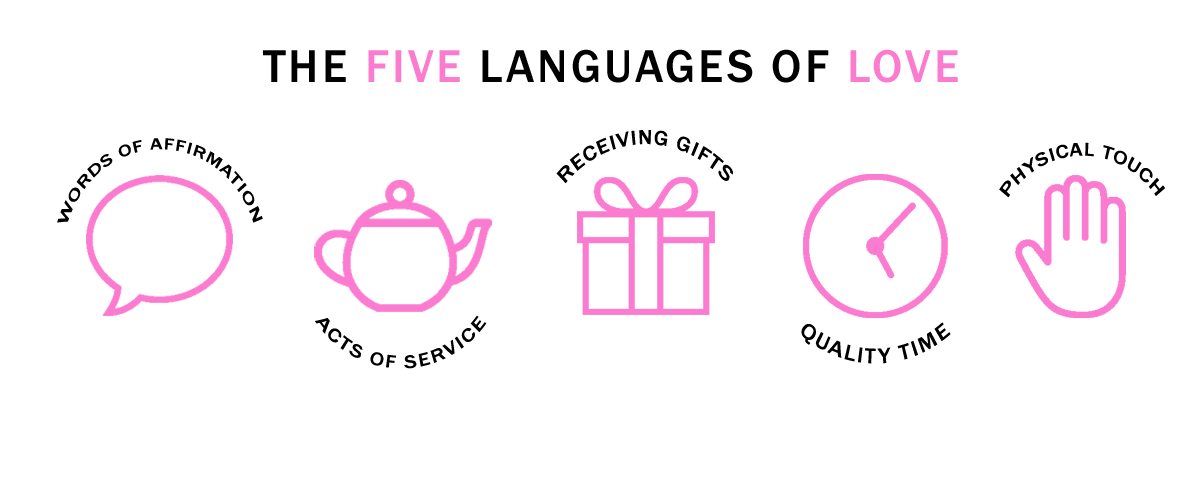
Unlocking Your Child’s Heart: Understanding the Five Love Languages for Kids
Understanding how your child feels loved and appreciated is crucial for their emotional well-being. Just like adults, children express and receive love in different ways. These preferred methods are often referred to as “love languages.” Identifying your child’s primary five love languages for kids can significantly improve your relationship, boost their self-esteem, and create a more harmonious home environment. This guide will delve into each of the five love languages for kids, providing practical examples and tips to help you effectively communicate your love to your child.
What are the Five Love Languages?
The concept of the five love languages was popularized by Gary Chapman in his book, “The 5 Love Languages: The Secret to Love that Lasts.” While originally intended for romantic relationships, the principles can be readily applied to parenting. The five love languages are:
- Words of Affirmation
- Acts of Service
- Receiving Gifts
- Quality Time
- Physical Touch
Understanding these languages allows parents to intentionally express love in ways that resonate most deeply with their children. It’s important to note that children, like adults, may have a primary language and secondary languages, meaning that while one method may be most impactful, others still hold significance.
The Five Love Languages for Kids Explained
Words of Affirmation
For children whose primary love language is Words of Affirmation, spoken appreciation and encouragement are paramount. These kids thrive on hearing positive reinforcement and sincere compliments. It’s not enough to simply say “good job”; you need to be specific and genuine in your praise.
Examples:
- “I’m so proud of how hard you worked on your math homework. You really persevered!”
- “You have such a kind heart. I noticed how you helped your little brother pick up his toys.”
- “I love hearing your perspective on things. You have such insightful thoughts.”
- “You are a fantastic artist. I love the way you use colors in your drawings.”
Tips:
- Leave encouraging notes in their lunchbox or backpack.
- Verbally acknowledge their efforts, not just their achievements.
- Be mindful of the tone you use when speaking to them. Sarcasm or criticism can be particularly hurtful.
- Publicly praise them in front of family or friends (if they are comfortable with it).
Acts of Service
Children who feel most loved through Acts of Service appreciate when others do things for them that make their lives easier or more enjoyable. It’s about showing love through actions rather than words. This doesn’t mean becoming a doormat, but rather demonstrating care and support through helpful gestures.
Examples:
- Making their bed or packing their lunch on a particularly busy morning.
- Helping them with a difficult homework assignment.
- Driving them to their extracurricular activities.
- Preparing their favorite meal.
Tips:
- Ask them what tasks they find most challenging or stressful and offer to help.
- Involve them in age-appropriate chores so they understand the value of contributing to the household.
- Be mindful of their needs and proactively offer assistance.
Receiving Gifts
For some children, receiving gifts is a tangible expression of love and care. It’s not about the monetary value of the gift, but rather the thought and effort behind it. These children appreciate the symbolism of a gift as a reminder of your affection.
Examples:
- Bringing them a small souvenir from a trip.
- Gifting them a book they’ve been wanting to read.
- Creating a personalized gift, such as a handmade card or a painted picture.
- Giving them a special treat, like their favorite candy or snack.
Tips:
- Pay attention to their interests and hobbies when choosing gifts.
- Wrap gifts thoughtfully to show extra care.
- Don’t overspend. The most meaningful gifts are often the ones that are personalized or sentimental.
- Remember that the gift of your time and attention can also be a valuable present.
Quality Time
Children whose primary love language is Quality Time crave undivided attention and focused interaction. It’s about being present and engaged with them, without distractions. This means putting away your phone, turning off the TV, and truly listening to what they have to say.
Examples:
- Having a dedicated family game night.
- Reading a book together.
- Going for a walk or bike ride.
- Engaging in a hobby or activity they enjoy.
Tips:
- Schedule regular one-on-one time with each child.
- Be fully present during these interactions.
- Ask open-ended questions to encourage conversation.
- Listen actively and empathetically to their thoughts and feelings.
- Plan activities that allow for meaningful connection and interaction.
Physical Touch
For children who feel most loved through Physical Touch, physical affection is essential. This includes hugs, kisses, cuddles, pats on the back, and other forms of non-sexual touch. These children feel secure and loved when they receive physical affection from their caregivers.
Examples:
- Giving them a hug and kiss goodnight.
- Holding their hand while walking.
- Cuddling on the couch while watching a movie.
- Giving them a pat on the back for a job well done.
Tips:
- Be mindful of their personal space and boundaries.
- Initiate physical affection regularly.
- Use physical touch to comfort them when they are upset.
- Make physical affection a natural part of your daily interactions.
Discovering Your Child’s Love Language
Identifying your child’s love language requires observation, experimentation, and communication. Here are some strategies to help you discover their preferred method of receiving love:
- Observe their behavior: Pay attention to how your child expresses love to others. Do they frequently offer compliments, perform acts of service, give gifts, spend quality time, or initiate physical touch? Their own expression of love often reflects their preferred way of receiving it.
- Listen to their requests: What do they frequently ask for? Do they ask for more hugs, more help with their chores, more time playing together, or more gifts? Their requests can provide valuable clues about their love language.
- Experiment with different approaches: Try intentionally expressing love in each of the five love languages and observe their reactions. Which methods seem to elicit the most positive response?
- Ask them directly: Have a conversation with your child about the five love languages and ask them which ones make them feel most loved and appreciated.
- Consider their age: Younger children may have difficulty articulating their feelings, so observation and experimentation may be more effective. Older children and teenagers may be more capable of expressing their preferences verbally.
Why Understanding Love Languages Matters
Understanding your child’s five love languages for kids is crucial for several reasons:
- Strengthens your relationship: When you communicate love in a way that resonates with your child, it strengthens your bond and fosters a deeper connection.
- Boosts their self-esteem: Feeling loved and appreciated helps children develop a strong sense of self-worth and confidence.
- Improves communication: When you understand how your child receives love, you can communicate your affection more effectively and avoid misunderstandings.
- Reduces behavioral problems: Children who feel loved and secure are less likely to act out or exhibit negative behaviors.
- Creates a more harmonious home environment: When everyone in the family understands and respects each other’s love languages, it creates a more positive and supportive atmosphere.
It’s also important to remember that your child’s love language may evolve over time as they grow and develop. Be open to adapting your approach as needed to continue meeting their emotional needs. Understanding the five love languages for kids is a continuous process of learning and adaptation.
Common Mistakes to Avoid
While understanding the five love languages can be incredibly beneficial, it’s important to avoid common pitfalls:
- Assuming your child’s love language is the same as yours: Just because you prefer receiving gifts doesn’t mean your child does.
- Neglecting other love languages: Even if your child has a primary love language, it’s still important to express love in other ways as well.
- Using love languages as manipulation: Don’t use gifts or acts of service as a way to control your child’s behavior.
- Focusing on quantity over quality: A few genuine expressions of love are more meaningful than many insincere ones.
- Ignoring their needs: Pay attention to your child’s cues and adjust your approach accordingly.
Conclusion
By understanding and applying the principles of the five love languages for kids, you can create a more loving, supportive, and fulfilling relationship with your child. Take the time to discover their preferred method of receiving love and intentionally express your affection in ways that resonate with them. This investment in your child’s emotional well-being will pay dividends for years to come. Remember that consistent effort and genuine affection are key to unlocking your child’s heart and fostering a strong, lasting bond. Identifying and nurturing your child’s five love languages is a gift that keeps on giving, strengthening your family unit and promoting emotional well-being for everyone involved. Don’t hesitate to experiment and communicate openly with your child to truly understand how they feel most loved and appreciated. [See also: Positive Parenting Techniques] and [See also: Raising Emotionally Intelligent Children]

